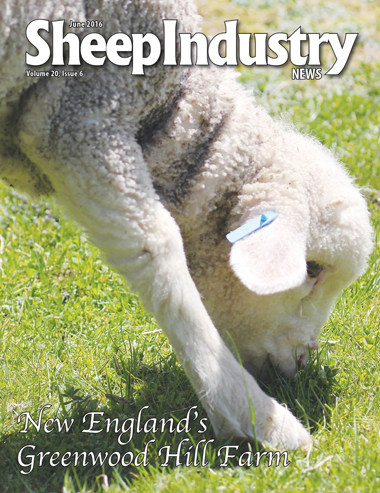Scapie Found in Two Flocks
It’s easy for producers to gaze out over a pasture of healthy looking sheep and convince themselves that all is right with the world. Such was the case in Indiana earlier this year, but what the producer didn’t see was a scrapie-positive flock.
“The producer had no idea because the flock appeared to be in good condition,” says Cheryl Miller, DVM and field veterinarian for the Indiana State Board of Animal Health. “When a producer isn’t seeing any clinical signs of the disease, it’s easy to think they are safe from scrapie. But that isn’t always the case.”
A 3-year-old cull ewe sent to slaughter was sampled for scrapie and tested positive. The Indiana flock was quarantined at the end of January. Genetically susceptible (QQ) sheep in the flock were euthanized and tested resulting in two additional scrapie-positive sheep being identified.
“From the start, the producer was great to work with and willing to do whatever he needed to do to clean up his flock,” Miller says. “The fact that he hadn’t seen any clinical signs of scrapie tells us it hadn’t been in his flock for very long. We were able to have him back up and running by April 11, but it can take longer in some cases.”
The producers who have the easiest time overcoming an infected flock are those who can provide USDA officials with complete records on their flock. Investigators will need to know when sheep/goats enter or leave the flock and where they came from or went to.
“We can get things cleared up quickly and easily if all the records are right there for us,” Miller says. “When the records aren’t there, we might end up chasing a lot of dead ends and that takes time. It might mean sorting through records at the sale barns, and the whole process can be very frustrating for everyone involved.”
In late April, an additional sheep tested positive for scrapie in Texas. The blackface show lamb originated in New Mexico.
In that case, the producer noted signs of weight loss and a lack of coordination and immediately contacted a local veterinarian. Cases have also been found in Michigan and Ohio in the last year. These recent cases are proof that sheep producers need to take the disease seriously and report animals showing clinical signs of scrapie. The most common signs are incoordination, weakness, behavioral changes, weight loss despite a good appetite and/or severe rubbing resulting in wool or hair loss.
“Dr. (Diane) Sutton (with USDA) talks a lot about staying vigilant when it comes to scrapie,” Miller says. “Through codon testing, we can tell if a sheep is susceptible to the disease. The problem is that there are plenty of other genetic traits producers are looking at when it comes to the type of sheep they produce. Scrapie isn’t their first priority, and that’s understandable. But there’s still a need to be cautious about it within breeding programs.”
Using an RR ram is the easiest way to minimize the risk of scrapie in sheep, Miller says, as this will substantially reduce the susceptibility of the offspring. Producers can also manage risk by not purchasing QQ ewes. Use of QR and QQ sheep might be needed to more quickly meet some breeding objectives (based on other genetic traits). A QR ram or even a QQ ram can be used without increasing scrapie risk if bred to an RR ewe.
Further, premise contamination can be largely prevented by breeding all QQ ewes to RR rams or if QR ewes are bred to QR rams since QR ewes are low risk for accumulation of the agent in the placenta. It will, however, open the possibility of producing QQ offspring, which are susceptible to the disease.
“It’s a matter of deciding how much risk you’re comfortable with,” Miller says. Producers who have taken steps to increase the resistance of their flocks are less likely to have their flock become infected and experience minimal impacts on their business if the flock is determined to be infected. “With codon testing, we don’t have to come in and just take the whole flock like we might have in the past. If we do have to come in and test the flock for scrapie, most infected flocks will have a small percentage of positives. It’s also important to remember that nothing is 100 percent when it comes to Mother Nature.”
ASI’s goal is to eradicate scrapie from the American sheep industry by 2017. For that to happen, producers need to understand the steps they can take to keep their flocks scrapie-free. For information, visit Sheepusa.org/IssuesPrograms_AnimalHealth_Scrapie, as well as the association’s quarterly newsletter, Scrapie: Eradicate It.
If you’re interested in submitting a head for scrapie testing, the USDA’s Animal and Plant Health Inspection Service provides shipping boxes and labels at no cost to producers. Many veterinary diagnostic laboratories also accept heads for scrapie testing.
To request a box or more information on sample submission, contact the Veterinary Services field office for your state. Contact information by State is available at https://www.aphis.usda.gov/animal_health/downloads/sprs_contact/field_office_contact_info.pdf. Veterinary Services field offices can also be reached through the toll free number, 866-873-2824.


